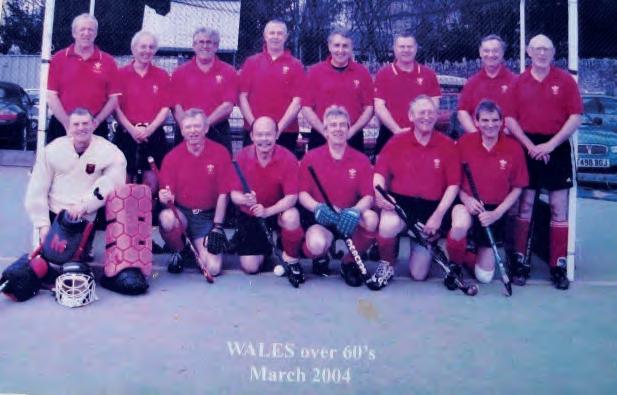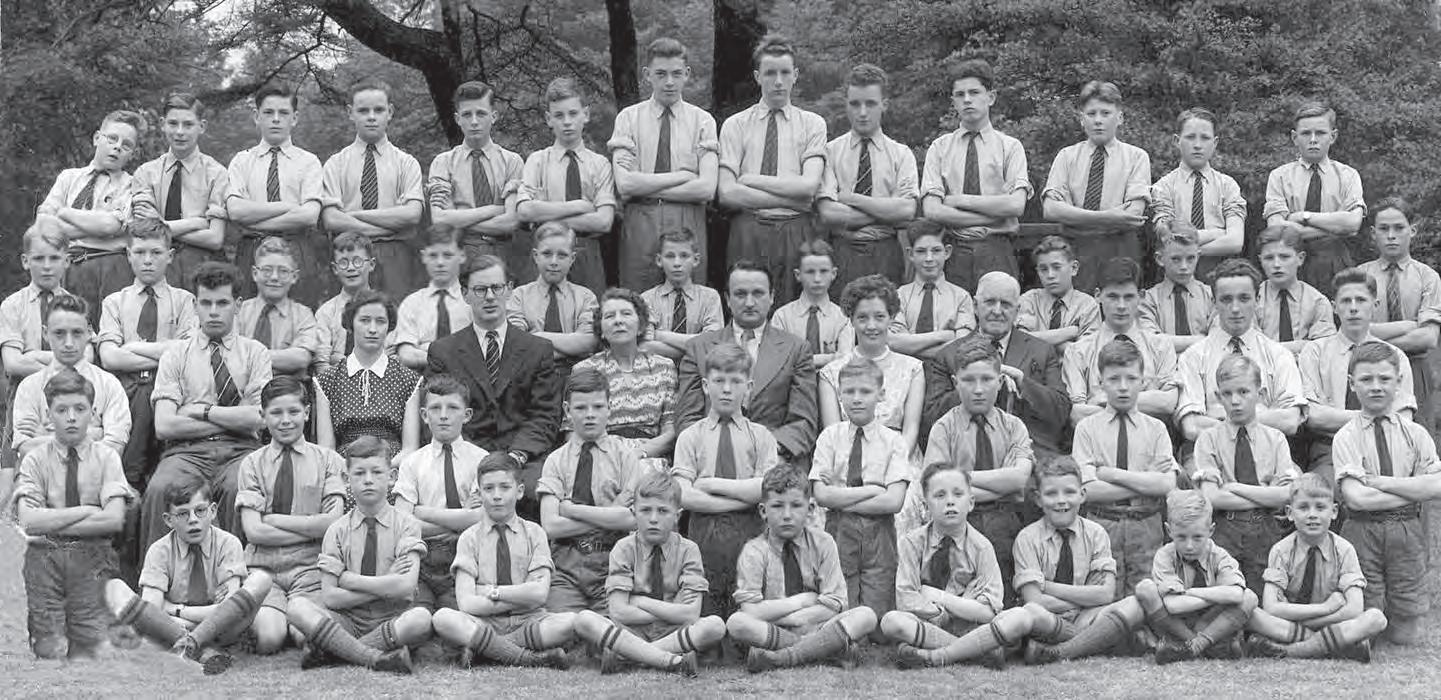
7 minute read
OR Memories
It’s good to take a trip down memory lane…
The Rogers Brothers Alan Rogers (Bristowe 1948)
Advertisement
1939 was not what you would call a banner year for the Rogers family in East Molesey, Surrey – a family consisting of parents, Millicent and Cecil, and three sons: John, Alan and Peter. In September, World War 2 broke out and later that autumn, Cecil died from a brain tumour. Millicent, of necessity, found a job to support the family and Cecil’s mother was called upon to be the caregiver for the boys during the day. After a short time, she too, passed away and other arrangements had to be made.
A chance conversation between Millicent and a casual acquaintance brought up the subject of Reed’s School, known to be a sound boarding school which espoused strong Christian values and which promoted integrity, honesty and fair play. A sponsor was arranged, paperwork completed, and the adventure began!
John and I were put on the train to Reed’s which was in Totnes then, having been moved from Watford due to its close proximity to London and the bombings taking place at that time. We were eventually followed by younger brother, Peter.
Reed’s became a second home to us and John, in particular, thrived. Later, as many will probably know, John became very involved in the governing body of the School and a leading light of the Old Reedonians Rugby Club, now the very successful Reeds Weybridge.
For these reasons, and because we know that John holds Reed’s so close to his heart, Kathy and I were very happy to donate to the Foundation in honour of John’s 90th birthday which was on 4th September.
Jerry Shelton (Blathwayt 1962)
Reading about the excellent achievement of Reed’s becoming national hockey champions last year (congratulations to all concerned), reminded me of a chilly October day in 1955. I was one of a large group of juniors gathered on the School football pitch (the one adjacent to where we used to play ‘bowling up’) to listen to our new Headteacher, Robert Quested Drayson, already known to all as RQD.
RQD had descended on Reed’s as a human whirlwind. Over the next 10 years he was to lay the foundations for the School to become the brilliant success it is now. However, all that I felt on that day in 1955 was deep resentment. There was to be no more soccer! Instead, we were to start playing hockey, a game I thought was for girls. I lived in Liverpool and had been mad about football almost since I could walk.
Gloomily, I listened to RQD describing the rules (and potential hazards) of hockey. My imagination was aroused by his vivid description of how he had witnessed one particularly wild use of a stick which led to it having to be levered out of some poor wretch’s skull. As the smallest boy in the school, I felt kind of vulnerable....
Anyway, there was no choice. We started playing hockey and, much to my surprise, I was soon loving the game, despite being pretty average at it. In my final year, 1962, I captained the 2nd team but only managed to make the 1st team on one occasion – a far from memorable event, as we were thrashed 6-1 by RQD’s team of guest players. Men against boys!
I returned to Liverpool, and after an interval of three boozy and largely idle university years, played for Liverpool Sefton Hockey Club until 1976, when work took me down to live in Monmouth. I then joined Lydney HC, playing for them until 1983, when I moved, again with work, to Cardiff. Once again, my first act was to join Cardiff HC, one of the UK’s top clubs, with superb facilities. They have always had a top-class first team, though I only ever played one game for it.
I still live in the city, but retired from regular hockey in 2006, aged 62. Having said that, I also played several times for the Wales Over 60’s between 2004 and 2008. The photo shows the team before its March 2004 inaugural fixture, against England, in Lansdowne Road, Bath. We won 3-2; I’m in the front row, second left, next to our keeper.
My son Mark, whom I have taken to games since he was barely toddling, has been a hockey fanatic ever since he could hold a stick and has turned out to be a much better player than I was. His daughter looks like she will be just as good. So, RQD, thanks for everything!
OR MEMORIES
Calling all former pupils of Vanbrugh Castle School David Pafford (Capel 1965)
Vanbrugh Castle School (VCS) was run by the RAF Benevolent Fund and between 1960 and 1976, when the School closed, several boys moved on to Reed’s. Two years ago, in September 2018, several former pupils of VCS attended a reunion hosted by the current owner of the Wakefield Wing, Lisa Taylor. She and her family organised the event together with ex-pupils Frank Valentine and David Gardiner. When the School closed, the Castle was divided into four apartments and the current owners welcomed all the visitors to the reunion and kindly showed us round their properties. Unfortunately, my brother Chris and I were the only Old Reedonians to receive the information and to attend the event.
It is proposed to hold another reunion at the site on 5th September 2021 and I would like to invite all Old Reedonians who attended VCS to take this opportunity to visit the site of their old school.
My memory has been sorely tested in trying to remember the names of ex-VCS boys who went to Reed’s, but I hope some of the following people see this article, get involved and pass the information on to any others they know: Don Taylor, Andrew McCulley, Chris Sanderson, Javed Rashid and Chris Pafford. My apologies to those I have failed to remember. Frank Valentine runs the VCS website and can be contacted by email at:
vanbrughcastleschool@outlook.com
and Danny Downes is a good source of information: dannydownes@sky.com The announcement of the reunion can be found at: vcs.atwebpages.com/
reunion-2021.html
My details: dmpaff@gmail.com I hope to see you on 5th September 2021, if not before.

Robert Wilmot (Bristowe 1969)
Reading last year’s article from Jess Houlgrave and, in particular, her work at Sotheby’s, inspired me to write about my experience in the world of art conservation. It was fairly clear when I left Reed’s in 1969 I was going to Art School. I did not know that my fascination with learning about the painting techniques of the old masters would lead me into the world of art conservation. After Art School in London and Bristol, I had to wait two years before I could begin to study Fine Art conservation. I completed a PGCE at Bristol University and taught at Ramsey Grammar School on the Isle of Man. In 1980, after completing training in Easel Painting conservation in the UK, I Ieft family and friends to progress my career in Australia.
One widely held misconception in conservation and restoration of museum artefacts or ‘portable heritage’ is that the restorer is replacing or putting back into a damaged artefact what was originally there. Phrases like ‘as good as new’ and television programmes such as The Repair Shop – despite unarguably demonstrating high technical skill – unwittingly serve to feed and perpetuate this idea. As far as paintings are concerned, the conservator or restorer must learn unnerving respect for the work of art and what the original artist was trying to accomplish. In compensating for damage or loss, the restorer must try to preserve and protect as much original material as possible and then recreate the intentions of the artist so that the viewer may experience the best possible chance of seeing what was originally intended. To avoid fraud, the restorers work must be carefully documented and recorded.
I was not aware of the personal significance of my first major painting restoration job at the time: it was the treatment of a water-damaged painting entitled The Embarkation of the Sudan contingent at Circular Quay, Sydney 3 March 1885 by the English artist, Arthur Collingridge. My maternal Grandfather, Robert Wesley Kelly, emigrated from the Isle of Man to begin a new life in Johannesburg in 1889, later moving up to East Africa, where I myself was born in 1951.
My work led to me developing the Lateral Tension Frame which, in turn, led on to the design and construction for a circular aboriginal acrylic painting from the Western Desert. Then, two years later, our workshop was given an unusual job of removing significant stained glass windows from a church in Adelaide to protect them during extensive building modification works. I know I will share with most, if not all Old Reedonians, the unshakeable core belief that the nurturing of the next generation is the most important thing that we can do and so, I hope, I leave some inspired.










